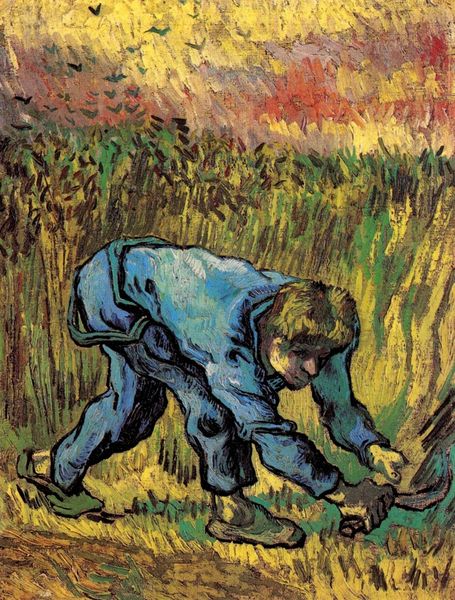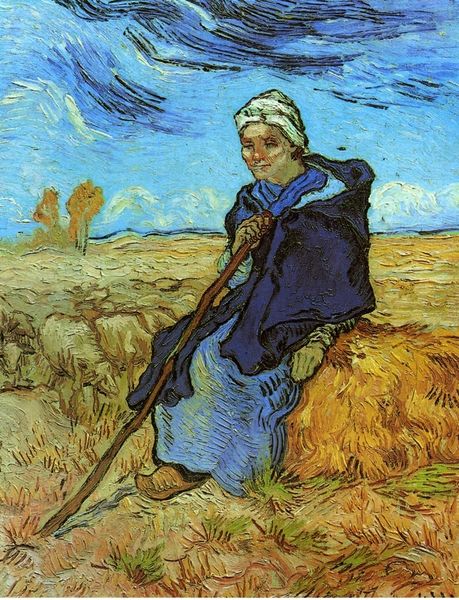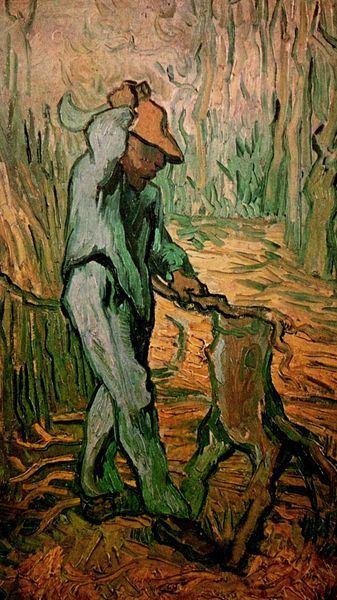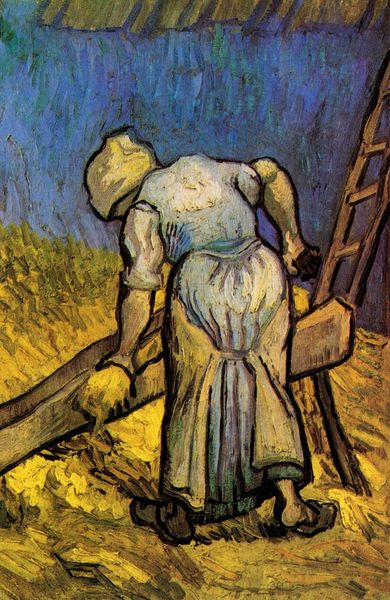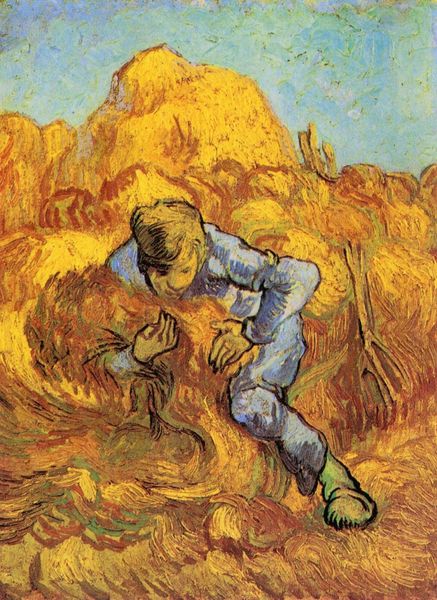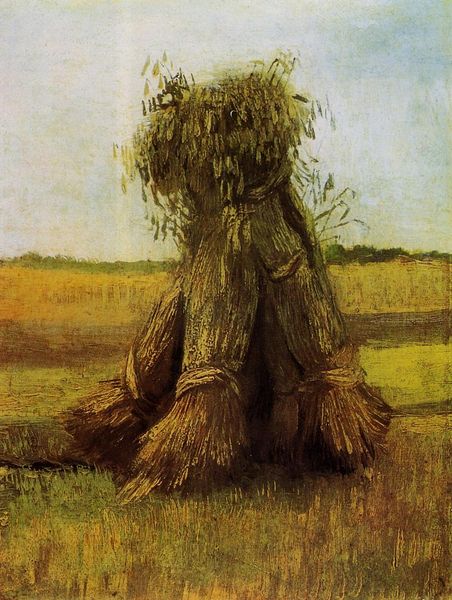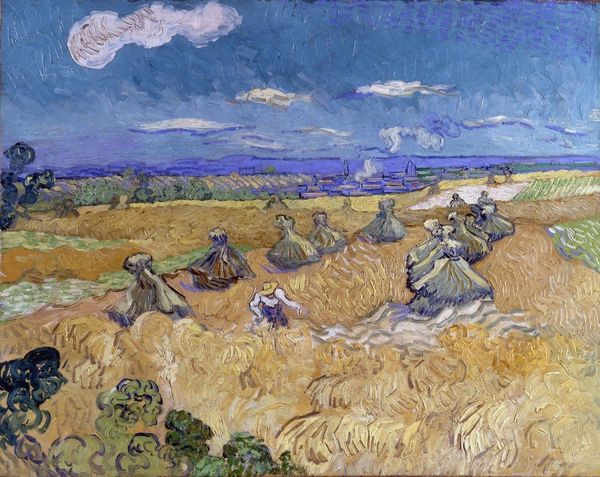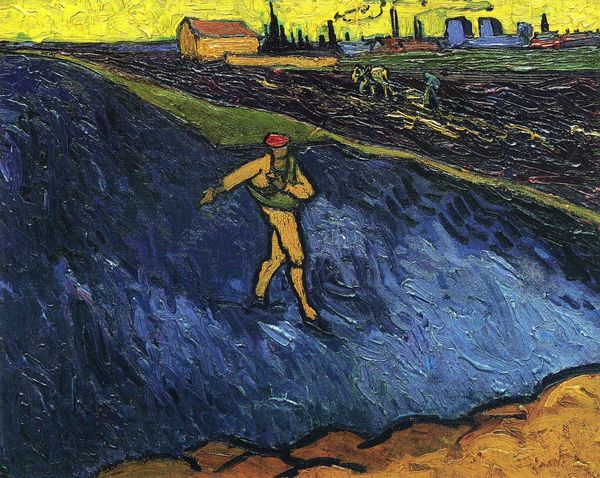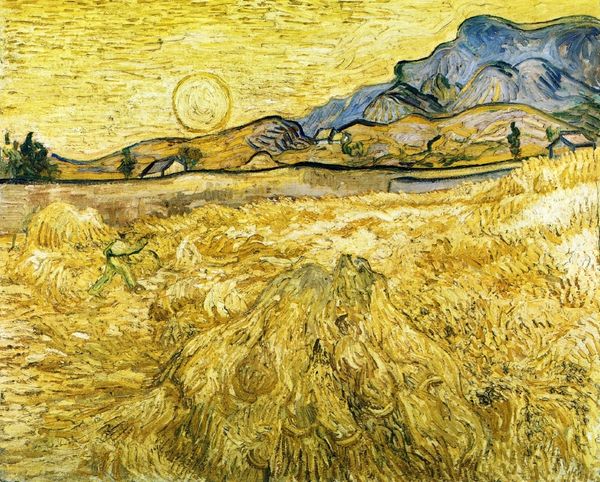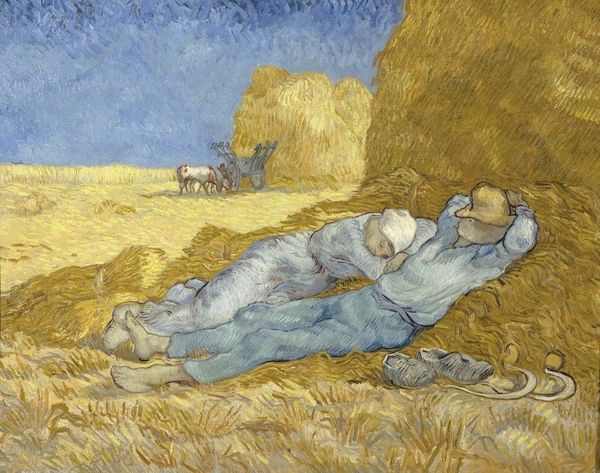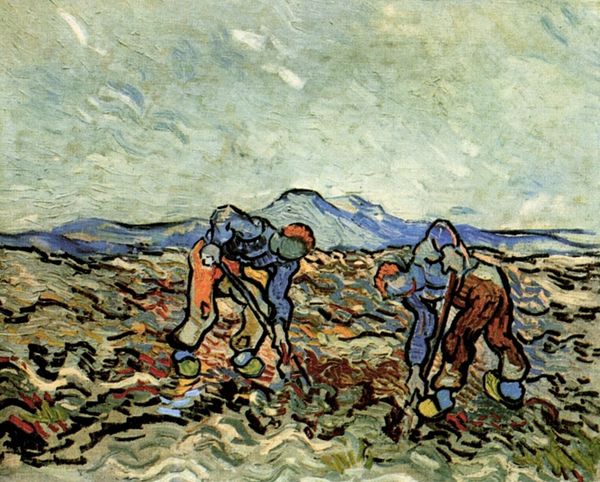
The Reaper after Millet 1889
0:00
0:00
vincentvangogh
Memorial Art Gallery (University of Rochester), Rochester, NY, US
Dimensions: 25 x 43.5 cm
Copyright: Public domain
Editor: Here we have Van Gogh's "The Reaper after Millet" from 1889, an oil painting currently at the Memorial Art Gallery in Rochester. I'm immediately struck by how solid and almost stoic the figure appears, despite the swirling brushstrokes and vibrant colors. What strikes you about this work? Curator: It’s interesting you say that, because what I see is Van Gogh engaging with the societal value and the imagery of labor. "The Reaper" wasn't an original concept but rather a study after Jean-François Millet, an artist known for his sympathetic depictions of rural life. What do you think Van Gogh was hoping to achieve by revisiting Millet’s theme? Editor: Perhaps he was drawn to the working-class subject matter that Millet championed and wanted to make it his own. He definitely amped up the color and the expressive brushwork. Curator: Exactly. He's building on a pre-existing, very popular image, which at that time held powerful socio-political weight. By injecting his own style and emotional intensity, he's commenting on how imagery shapes and perpetuates perceptions of work and class, but with, what would you say, a raw individualism? Editor: I see what you mean. The brushstrokes almost turn the laborer into a monument, not to any ruling class, but to the dignity of hard work. It almost democratizes traditional portraiture through it. Curator: Yes, democratizes, making it universally heroic. So Van Gogh builds upon Millet's message and translates it, adding to the discourse around what work represents and what societal impact art could have on how people were perceived. It’s a beautiful and potent use of an existing image. Editor: I never considered it as engaging with the sociopolitical scene. Seeing it in that light, especially understanding Millet’s context, changes the entire meaning. Curator: Precisely! And understanding that is essential. It opens doors to richer dialogues in interpreting art’s true message.
Comments
No comments
Be the first to comment and join the conversation on the ultimate creative platform.
